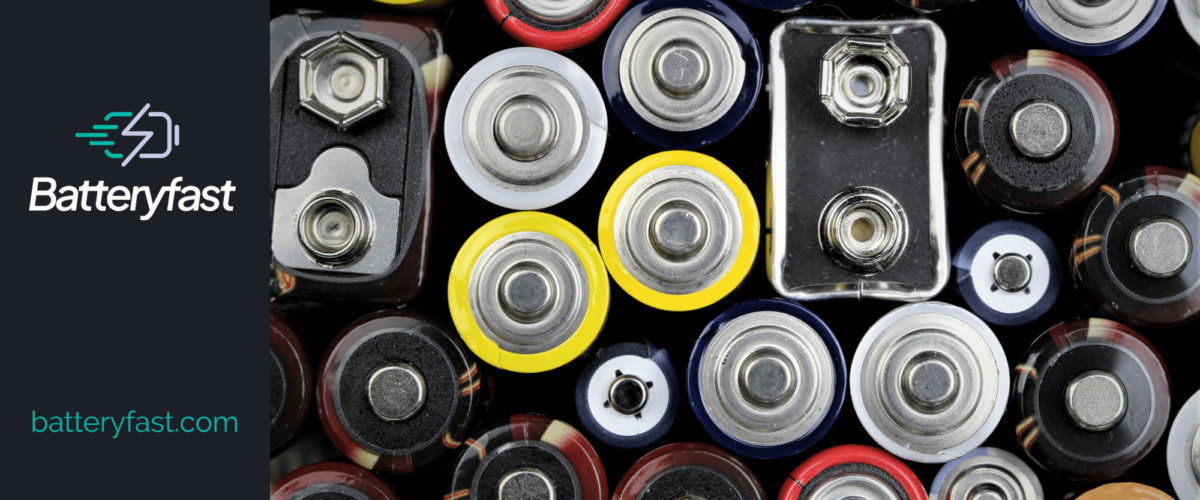It seems as if batteries for consumer products are benefiting the most from technological advancements, and that industrial batteries are being left behind. While this may appear so on the outside, we must examine the constraints under which industrial batteries are designed to operate. Consumer batteries are made for long runtimes, whereas the main objective of industrial batteries is reliability, safety and long life.
Let’s look at the broad spectrum of available batteries, which stretches from small packs delivering only microamperes in current to batteries delivering hundreds of amperes and operating under demanding environmental conditions.
Primary Batteries
Long-life primary batteries do more than keeping the time on watches and energising electric keys; they play a critical role in medical equipment, such as pacemakers. The implantable pacemaker battery, for example, has one of the highest energy densities. It uses a primary lithium-metal battery that holds almost twice the capacity of a rechargeable lithium-ion. An important attribute of this battery is low self-discharge. It loses only 10 percent of its energy in five years, a figure that is five times better than alkaline, and far superior to any re-chargeable battery. Pacemaker batteries draw 10–20 microamperes and last 5–10 years.
Most hearing aid batteries are primary also. They have a capacity of 70–600mAh and last for 5 to 14 days before needing replacement. The rechargeable version has less capacity and lasts for about 20 hours between charges. The battery provides roughly 500 charge/discharge cycles before the fading capacity reduces the usable time to less than the accustomed waking hours.
Other applications deploying primary batteries are ocean buoys for lighting and mountaintop repeaters for communications. Small primary batteries energize tire pressure gauges in cars and trucks. Furthermore, batteries activate miniature transmitters to track birds in the air, animals in the wild and fish in the ocean. In the medical world, swallowing a battery-powered pill with built-in camera allows viewing the digestive system of a patient.
Consumer Batteries
Nowhere is the battery more visible than in personal communications and portable computing. There are over four billion cellular phones in use globally, and computing work is being made possible on the go. Made for optimum runtime and low price, batteries for iPods, mobile phones, digital cameras and laptops lead in technological advancements.
Some manufacturers offer devices featuring permanently embedded batteries. Making the battery an intrinsic part of a device is good on one hand because a hidden power source lessens concerns and the user can no longer blame the battery when a glitch occurs. But the integrated approach raises new problems. Customers want the freedom to replace a spent battery with a spare to get continuous service on a busy day. Devices that offer different battery sizes serve the need for extended service especially well. Battery users are also aware of capacity fade and want to be able to replace the pack when appropriate. Manufacturers, on the other hand, argue that batteries have improved sufficiently and that replacement won’t be necessary for the life of the device.
When first introduced, the non-replaceable battery for the Apple iPod caused uproar, especially when consumers were instructed to send the unit to a service facility for a simple battery replacement. This pandemonium has now abated and Apple makes laptops with non-replaceable batteries. A sealed unit enables smaller and cheaper designs, a move that makes sense if the battery matches the service life of the machine. Low-cost cordless drills and electric toothbrushes are forerunners of appliances with non-replaceable batteries. To extend battery life on the go, independent manufacturers offered generic battery packs that connect to the portable device through the appropriate DC connector, similar to an AC adapter. This was a novel idea, but these packs never took off in a big way.
Batteries for Remote Control Hobbyist
Remote control (RC) hobbyists are a special breed of battery user who stretch tolerance to the maximum without undue concern for battery stress and safety. After using top-end brand nickel-cadmium, they now embrace high-current lithium-ion cells because of their small size and low weight. A devoted RC fan sends me this email:
“I’ve been using lithium-ion polymer batteries in my RC helicopters and they are amazing. I currently have a 3S1P* pack, 2,200mAh that can continuously supply 30C without getting warmer than 50°C. I’ve put a data logger in the helicopter and tested current draws of 35A average, and 80A peak at voltages above 10.5V.”
The battery pack in the RC helicopter with three cells in series can indeed generate over 700 watts, almost one horsepower (one horsepower has 746 watts). As thrilling as an RC helicopter, car or boat can be, the life of these packs will be short if cycled at 30C. RC buffs are well aware of the compromise and are willing to pay the price, as well as take some safety risks. Specialty batteries given to experts have fewer regulations than those offered to the public at large, and with sufficient knowledge and common sense, such relaxation for educated uses is justified.
RC fans are also flocking to Li-phosphate. They claim longer cycle life and better thermal stability than Li-polymer, making them less likely to catch fire when over-stressed. In addition, Li-phosphate runs 20°C (36°F) cooler than Li-polymer, but the lower voltage of 3.3V/cell as opposed to 3.6V for Li-polymer results in a slight decrease of performance.
Manufacturers recommend that RC batteries be charged with a cell balancer, a device that goes in between the charger and the battery. The cell balancer brings two or three cells in series to equal voltage while on charge. If a cell’s voltage is too high in a string, the cell is gradually discharged with a shunt resistor to match the others. Power tool and EV batteries have similar requirements to ensure that all cells are matched for optimal longevity and performance.
Batteries for Portable Industry
A defibrillator draws 30 amperes to charge the large capacitors delivering the electric shock to a patient with a cardiac arrest. Reserved for nickel-based batteries in the past, these medical devices are increasingly moving towards lithium-based systems. Defibrillators are first-aid tools that are increasingly being used in shopping malls, sports arenas and aircraft.
Advanced defibrillators do more than give shock treatments. By adding a mechanical movement, a defibrillator can provide CPR (cardiopulmonary resuscitation) and become a support pump to apply chest compression to a patient with cardiac arrest. The CPR function begins by circulating the blood to the heart, brain and other organs, and then adds electric shocks at strategic moments. Without automation, a medical team of doctors and nurses would be needed to administer the procedure. Batteries for such life-support pumps must deliver 30 amperes for an uninterrupted duration of 30 minutes.
An industrial power drill draws up to 50 amperes on full load, and cordless power tools fall into the heavy-duty category in terms of batteries usage. Running at voltages of 12, 18, 24 and 36V, cell matching becomes critical, especially when the tools are used in cold weather. Li-ion packs require protection circuits to prevent imbalance and protect against abuse. This adds to the price. The advantage of the protection circuit is longer battery life by safeguarding the pack against a common abuse, which is jamming. Jamming on an unprotected pack can induce a high inrush current, which can lead to a voltage collapse, cell reversal and electrical short. This is especially critical on low charge or at cold temperatures when the battery is less robust.

